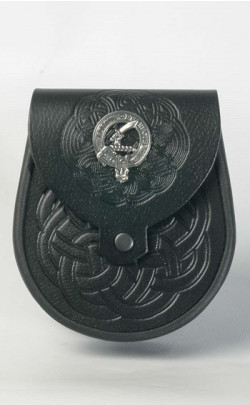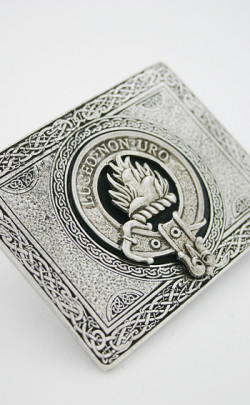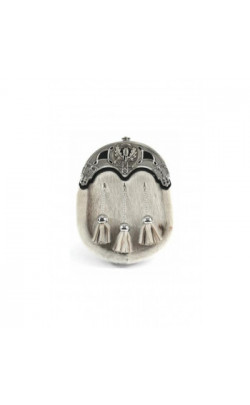
Clan Boyle
GOD WILL PROVIDE
We are delighted to offer a range of products and resources for the Clan Boyle, including:
- 109 tartan products available in your choice of tartan
- 7 Boyle family crests
- 21 products featuring the Clan Boyle crest
- 1 Boyle family history mini-books
The Tartan
of Clan Boyle
Sorry! We don't currently have any tartans for Clan Boyle
But dinnae fret!
Design your own
Browse the collection
You could choose a tartan of an associated family or a universal tartan:
We can add your family tartan
Irish History
of Clan Boyle
Warrior kings and adventurers
At least three sources can be traced for the presence of the proud name of Boyle in Ireland.
There are those Boyles who are of truly native Irish descent, those from Scotland, and those who settled there as lords and masters in the wake of the Anglo-Norman occupation of the island.
County Donegal, in the northwest of the Emerald Isle, was for centuries the territory of the powerful clan of Ó Baoighill, later anglicised as Boyle.
The founder of the clan was a mid to late tenth century Donegal chieftain known as Aneisleis O’Baoghail, with ‘Baoghail’ indicating ‘having profitable pledges.’
In common with the O’Donnells and other clans who formed what was known as the Clan Conall of the northern Uí Neill, the Boyles traced a descent back to the legendary Niall Noíghiallach, better known to posterity as the great warrior king Niall of the Nine Hostages.
Niall became Ard Rí, or High King, in 379 A.D. and embarked on the series of military campaigns and other daring adventures that would subsequently earn him the title of Niall of the Nine Hostages.
The nine countries and territories into which he raided and took hostages for ransom were the Irish provinces of Munster, Leinster, Connacht, and Ulster, Britain, and the territories of the Saxons, Morini, Picts, and Dalriads.
Niall’s most famous hostage was a young lad known as Succat, son of Calpernius, a Romano-Briton who lived in the area of present day Milford Haven, on the Welsh coast.
Later known as Patricius, or Patrick, he became renowned as Ireland’s patron saint, St. Patrick, responsible for bringing the light of Christianity to the island in the early years of the fifth century A.D.
Raiding in Gaul, in the area of Boulogne-sur-mer in present day France, Niall was ambushed and killed by one of his treacherous subjects in 405A.D.
It was through Niall’s son Conall Gulban that the Clan Conall was linked by blood to this most illustrious of Irish kings.
The ancient Boyle presence in Co. Donegal can still be found in place names, with Ballyweel, near the town of Donegal, originally known as Baile ui Bhaoighill, indicating ‘the home of the O’Boyles.’
Only a few short miles across the sea from the northwest of Ireland, a family of Boyles had lived since the early years of the twelfth century in the Scottish west coast area of Ayrshire.
These Boyles were of original Norman stock, descended from lords and their retainers who had fought at the side of William the Conqueror at the battle of Hastings in 1066.
Their original name was de Boyville, taken from the place name of Beaville, in Normandy, from where they hailed.
In 1126, at the invitation of Scotland’s David I, a number of this Norman nobility settled in Scotland.
Among them was Hugo de Morville, who was granted the lands of Cunningham and Largs; subsequently sub-dividing this territory he granted the lands of Kelburn to his close kinsfolk the de Boyvilles.
In common with the descendants of many other Norman settlers to Scotland, including the freedom fighter William Wallace and King Robert the Bruce, the de Boyvilles, or Boyles, soon became as Scottish as the native Scots, adopting the cause of what had become their Celtic homeland.
They fought at the side of Bruce in his victory over the army of England’s Edward II at the battle of Bannockburn in 1314 and proved staunch supporters of the ill-fated Mary, Queen of Scots.
An earldom was bestowed on them in 1703, and the current clan chief of the Scottish Clan Boyle is the 10th Earl of Glasgow.
In the centuries following Scotland’s Wars of Independence against England many Boyles settled in Ireland, particularly in the ancient northern province of Ulster, and many of their descendants are to be found there to this day.
By far the biggest influx of ‘foreign’ Boyles to the island, however, came in the form of those Norman adventurers who acquired lands there in the bitter and bloody aftermath of the twelfth century Cambro-Norman invasion of the island and the subsequent consolidation of power by the English throne.
Ireland, in effect, became a vassal state of England, with the island ruled by an English elite behind the fortified walls of the city of Dublin and its environs.
One of the most prominent of the Anglo-Norman adventurers to lay claim to Irish soil was Richard Boyle, the father of a dynasty of famous and infamous Irish Boyles.
Born in 1566 in Canterbury, England, he left home for Ireland at the age of 22 to take advantage of the rich pickings in terms of lands and titles that were available to those ruthless enough to seize them.
He soon prospered, being appointed to a lucrative colonial government post only two years later and making an important marriage in 1595 to the daughter and co-heiress of William Apsley, a member of the council to the president of the province of the south-western province of Munster.
Boyle later fell foul of the envy of rivals and was falsely accused of fraud but, in 1600, after putting his case before England’s Queen Elizabeth I, the monarch declared that he was ‘a man fit to be employed by ourselves’, and promptly appointed him clerk of the council of Munster.
Knighted in 1603, he was appointed a privy councillor for Ireland ten years later, and created Earl of Cork and Dungarven in 1620.
By 1631, having acquired vast estates along the way, including the 42,000 acre estate of the executed Sir Walter Raleigh in Co. Cork, he was appointed Lord High Treasurer of Ireland.
Known as ‘The Great Earl of Cork’ and ‘the first colonial millionaire’, Boyle had married his second wife, Catherine, following the death of his first wife in 1599.
The couple had no less than eight daughters and eleven sons – and some of these sons went on to play prominent roles not only in Irish affairs but further afield.
While some of the original native Gaelic Irish families had been reluctantly forced to seek an accommodation of sorts with the English Crown over the centuries, others found themselves drawn into insurrection and rebellion.
In 1641 landowners such as the native Irish Boyles and the O’Donnells of Co. Donegal rebelled against the English Crown’s policy of settling, or ‘planting’ loyal Protestants on Irish land.
This policy had started during the reign from 1491 to 1547 of Henry VIII, whose Reformation effectively outlawed the established Roman Catholic faith throughout his dominions.
In the insurrection that exploded in 1641, at least 2,000 Protestant settlers were massacred and thousands more were stripped of their belongings and driven from their lands to seek refuge where they could.
England had its own distractions with the Civil War that culminated in the execution of Charles I in 1649, and from 1641 to 1649 Ireland was ruled by a rebel group known as the Irish Catholic Confederation, or the Confederation of Kilkenny.
Richard Boyle, 1st Earl of Cork, became an early victim of the rebellion – being chased off his lands and dying two years later.
A monument erected by the earl in his lifetime to himself, his mother, his wives, and his children can be seen today in St Mary’s Church, in Youghal, Co. Cork, while another imposing monument can be see in Dublin’s St. Mary’s Cathedral.
Following their father’s death, his sons were destined to play a bloody role in suppressing the rebellion, managing to recover their landed heritage in full.
But the brutal suppression of the rebellion, largely at the hands of England’s ‘Lord Protector’ Oliver Cromwell, who descended on the island at the head of a 20,000-strong army in August of 1649, would have dire consequences for clans such as the Boyles of Donegal.
High honours
The third surviving son of the 1st Earl of Cork, Roger Boyle, known as ‘The Wise’, born in 1621 and who later held the titles of 1st Earl of Orrery and Baron of Broghill, first clashed arms with the Confederate rebels at the battle of Liscarrol in September of 1642.
At his side was his brother Richard Boyle, later 1st Earl of Burlington, 2nd Earl of Cork, and 1st Baron Clifford of Lanesborough.
The Royalists achieved a victory over the rebels at Liscarrol, but Roger Boyle was to achieve a much more decisive victory over them nine years later at the battle of Knocknaclashy.
By this time he was fighting on the side of the Parliamentary army of Oliver Cromwell.
On May 10, 1650 Boyle defeated an Irish force that had been marching to the relief of Cork at the battle of Macroom.
By this time now firm friends with Cromwell, he was entrusted with what proved to be the final defeat of the rebel leader Donagh McCarthy, Viscount Muskerry, who was marching at the head of a 3000-strong army to attempt to relieve the besieged defenders of Limerick.
Cromwell earlier had remarked of Boyle’s father, the 1st Earl of Cork, that ‘if there had been an Earl of Cork in every province it would have been impossible for the Irish to have raised a rebellion.’
It was at Knocknaclashy, near the village of Banteer, that in July of 1651 Boyle intercepted Viscount Muskerry’s numerically superior force.
Although outnumbered, Boyle’s force was better equipped and trained, and he directed the battle that led to the virtual slaughter of Muskerry’s brave but doomed infantry and cavalry.
Boyle lost less than 30 dead and only 130 wounded.
Nursing a burning hatred for the rebels, Boyle ordered that all prisoners should be killed – except those of ‘quality’ who would fetch a fair ransom.
Later giving an account of the slaughter, Boyle related how Catholic charms, assuring that the wearer would be impervious to weapons, were found sewn into the ragged clothing of the rebel dead.
Viscount Muskerry and what remained of his army retreated in great confusion to Ross Castle, where they were forced into humiliating surrender the following year.
The battle proved to be the final death knell of the rebellion, with Cromwell already having initiated a policy of what amounted to ethnic cleansing.
His troopers were given free rein to hunt down and kill priests, while all Catholic estates were confiscated.
Catholic landowners such as the Boyles of Donegal were grudgingly given pathetically small estates west of the river Shannon – where they were hemmed in by colonies of Cromwellian soldiers.
Many Gaelic-Irish such as the Boyles of Donegal were later forced to seek a new life in foreign lands – where their descendants flourish to this day.
Created Earl of Orrery and appointed a lord justice of Ireland in 1660, Boyle later gained fame as a statesman and dramatist – his literary works, perhaps fittingly, including his 1677 Treatise of the Art of War.
Other products of his pen were the plays The Black Prince and Tryphon.
His brother Richard, 2nd Earl of Cork, after various vacillations in his loyalties, was appointed a privy councillor and Lord Treasurer of Ireland in 1660 following the Restoration of Charles II.
In 1689, following the flight of James II and the subsequent accession to the thrones of England, Scotland, and Ireland of the Protestant William of Orange and his wife Mary, James held a Parliament in Dublin that effectively confiscated the estates of Protestants such as Boyle.
But William later overturned this, and the Boyle estates were secured.
Henry Boyle, a grandson of Roger Boyle, 1st Earl of Orrery, was created Earl of Shannon in 1756; his son, the second earl, who was a Vice-Treasurer for Ireland, was created Baron Carleton in 1786.
The titles are still retained by the family.
Meanwhile not all of the 1st Earl of Cork’s sons were to be found on the battlefields of Ireland.
Born in Lismore Castle in Co. Waterford in 1627, Robert Boyle was the seventh son of the earl and is remembered today as ‘The Father of Chemistry.’
Also known as Robert Boyle ‘The Philosopher’ he was something of a child prodigy, learning to speak French, Greek, and Latin at an early age.
Educated at Eton and later travelling to France, Switzerland, and Italy, he returned to England in 1645 to settle in the Boyle family manor of Stalbridge, in Dorset, that had been bequeathed to him by his father.
Dedicating himself to a life of intensive scientific research, he became a member of the group of fellow seekers of knowledge known as the Invisible College, forerunner of the scientific ‘think-tank’, the Royal Society.
By 1654 he was settled in Oxford, and it was here that he dabbled in alchemy – the attempt to turn base metals into gold.
It was partly due to these albeit abortive experiments, that Boyle made a number of important scientific discoveries – including what is known today as Boyle’s Law, that ‘the volume of a gas varies inversely as the pressure upon it, providing temperature is constant.’
In addition to other important discoveries in the realms of chemistry and physics, Boyle studied theology and spent a great deal of his wealth on promoting the spread of Christianity throughout the territory of the East India Company, of which he was a director.
It is also thanks to Robert Boyle that Boyles of today can boast a place name on the moon – this is Boyle Crater, the lunar impact crater named in his honour.
Meanwhile in art, Richard Boyle, 3rd Earl of Burlington, 4th Earl of Cork, and known as ‘the architect earl’ was born in Yorkshire in 1694.
A direct descendant of Richard Boyle, 1st Earl of Cork, he was responsible for the design of not only his own London residence of Burlington House in Piccadilly, but also the York Assembly Rooms and Tottenham Park, in Wiltshire.
Family History Mini Book
We hope you enjoyed reading this excerpt from this mini book on the Irish history of the Boyle family.
You can buy the full book for only109 Made-to-order
Tartan Products
The Crests
of Clan Boyle













































































